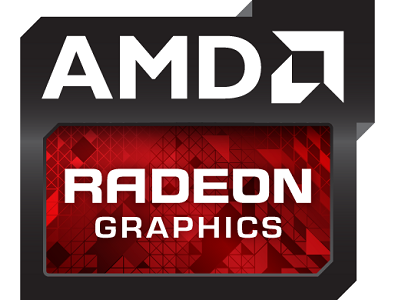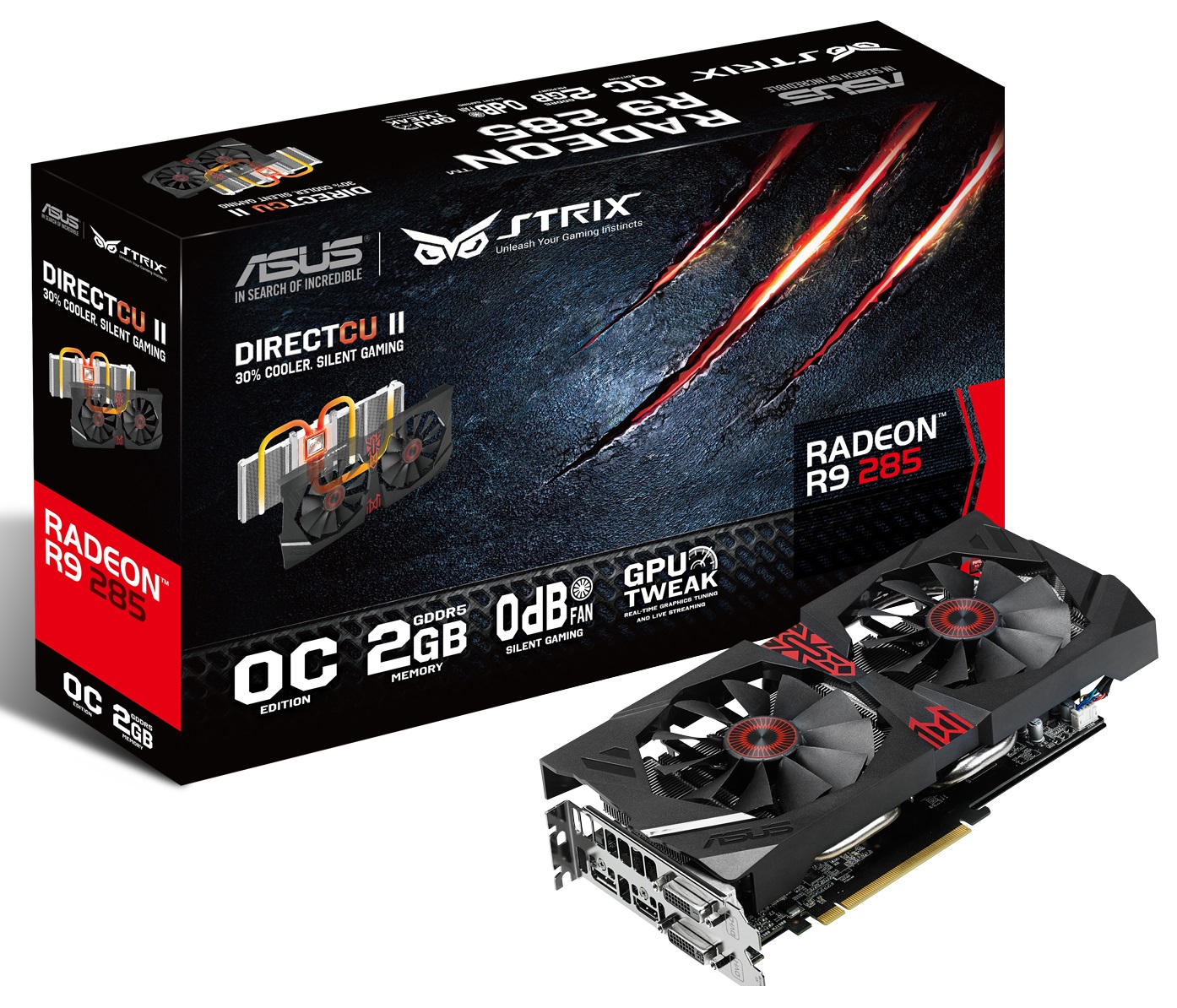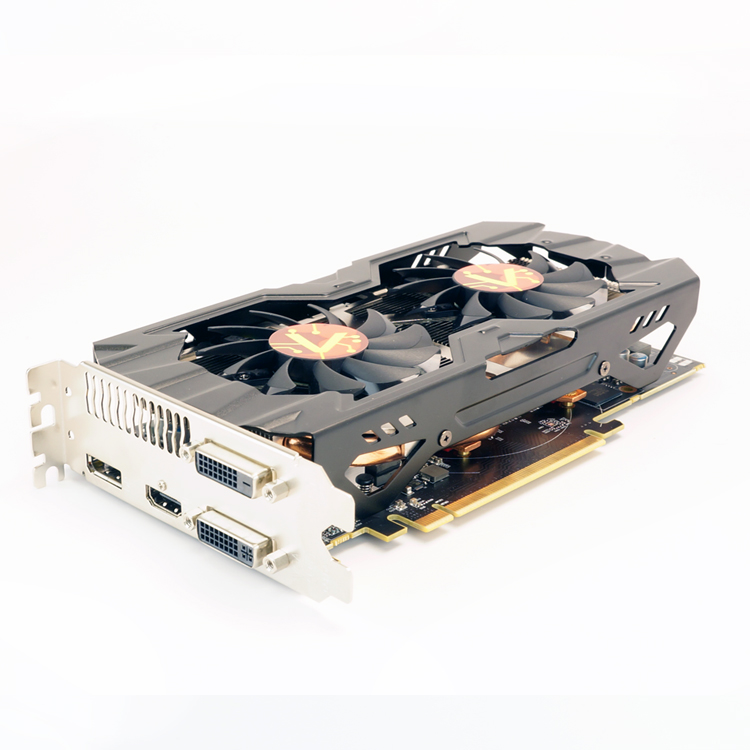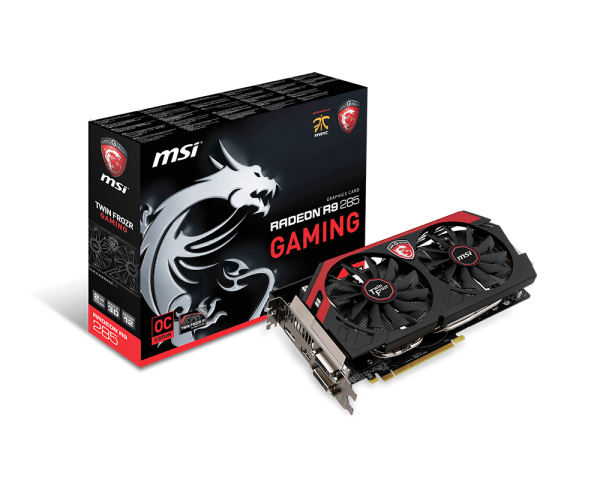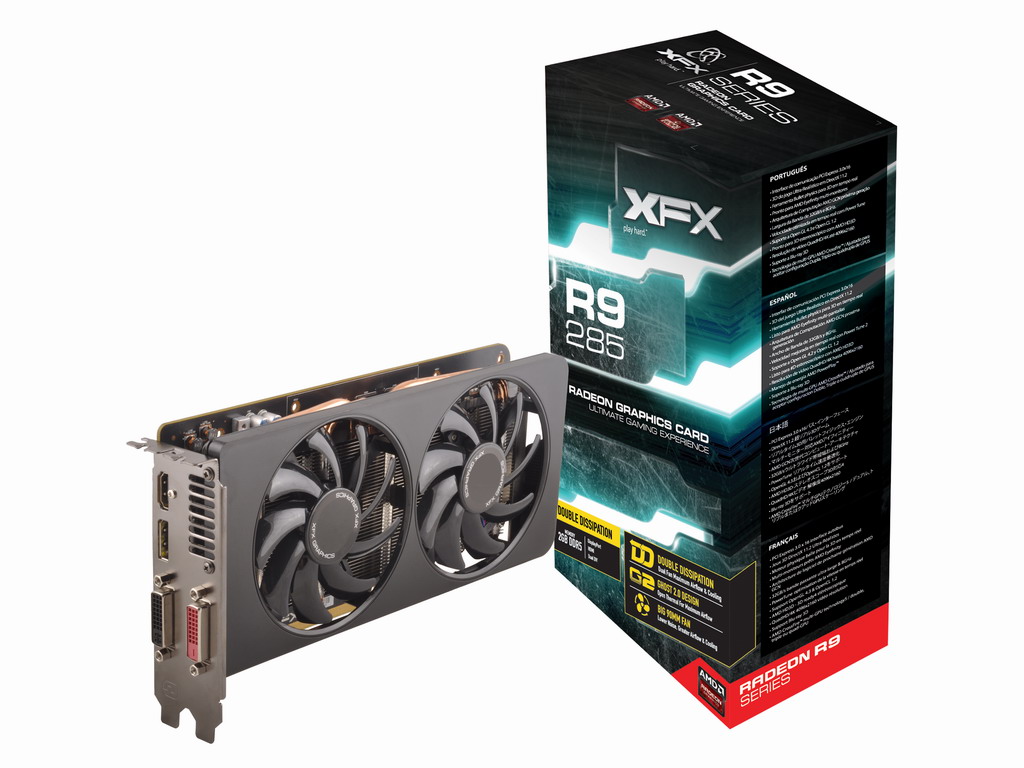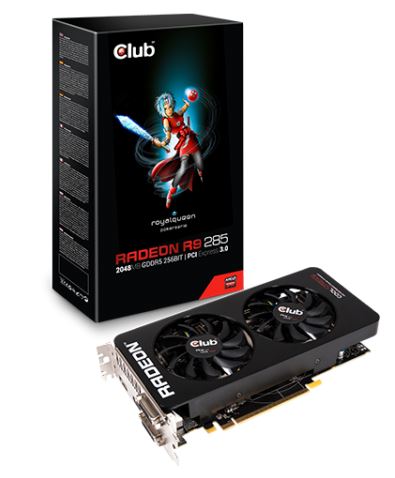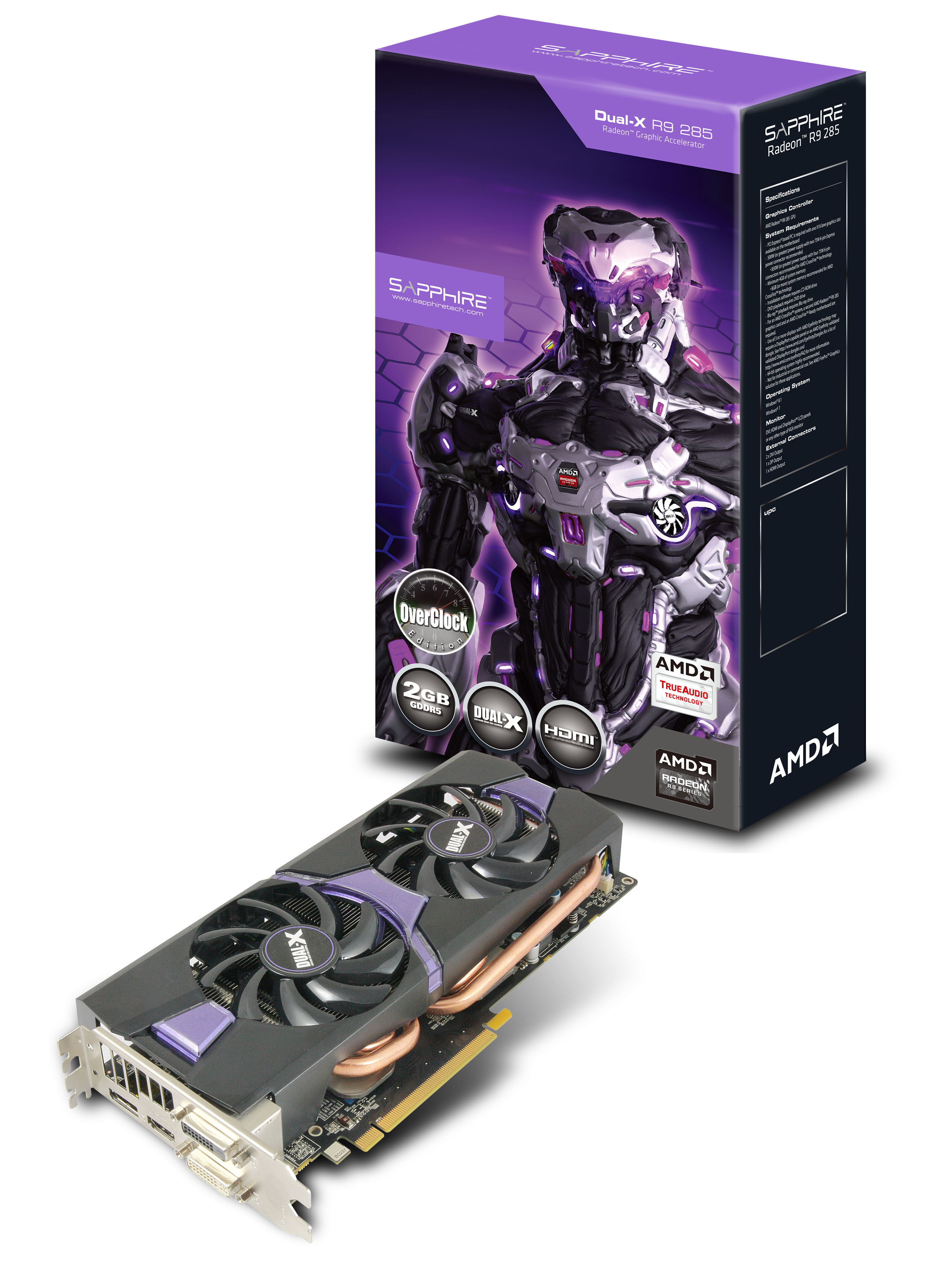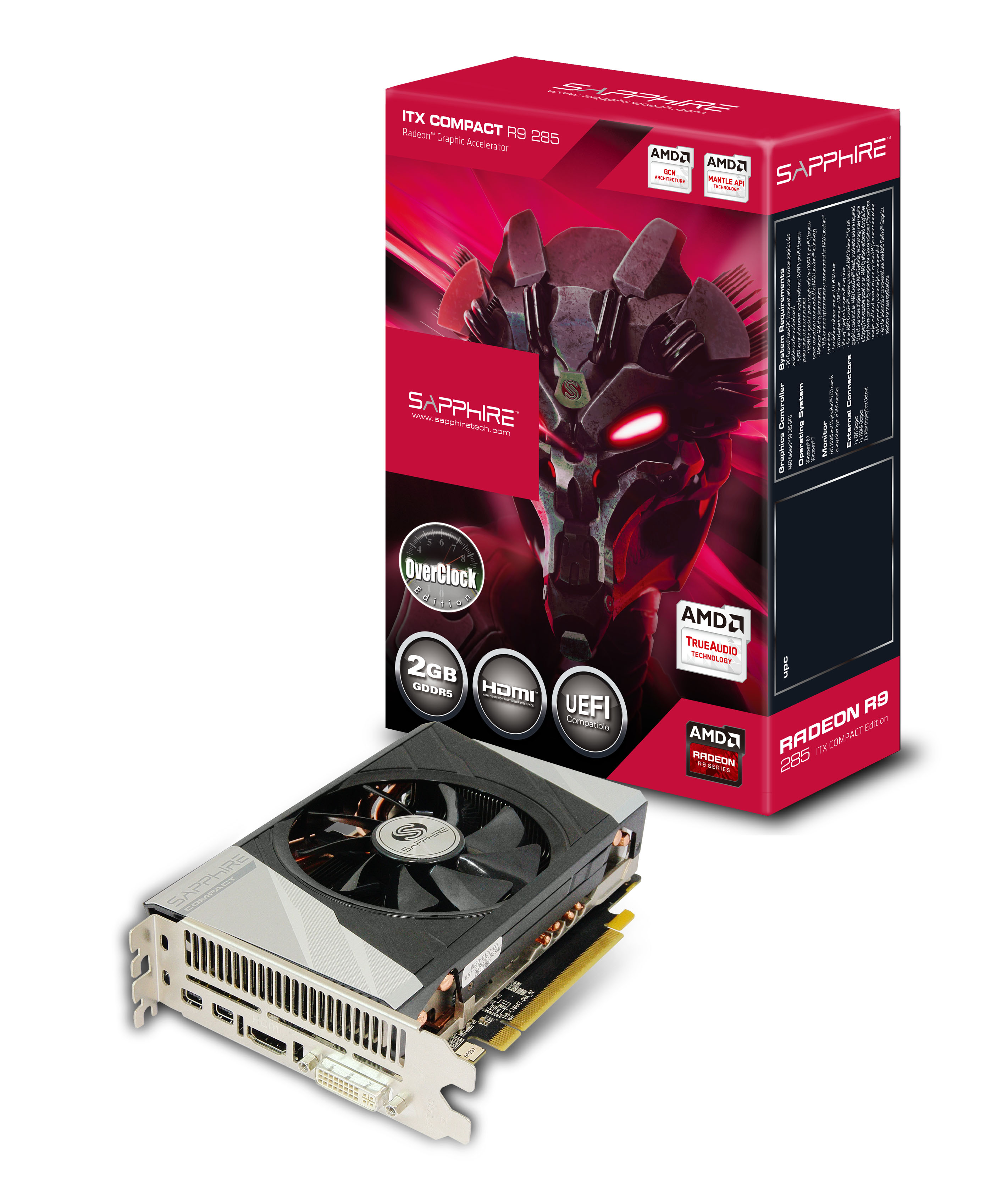Rounding Up Initial Flood Of R9 285 Graphics Cards
After the Radeon R9 285 launched yesterday, today we bring you a roundup of a handful of cards.
Yesterday AMD launched its Radeon R9 285 graphics card, and after waiting a day we’re bringing you a roundup of all the R9 285 cards that we’ve spotted.
The Radeon R9 285 AMD's first graphics card based on the Tonga GPU. Actually, that’s not even entirely accurate, as AMD simply hasn’t provided a reference design for the card, leaving it to the AIB partners to sketch up their own boards. Of course, there are reference specifications: The GPU carries 1792 stream processors, with 112 TMUs and 32 ROPs. The reference frequency for the cards is set at up to 918 MHz, with memory running at an effective speed of 5.5 GHz. On most cards, the memory consists of 2 GB of GDDR5 memory, and it always runs over a 256-bit memory interface. This might make it appear slower than the R9 280 that it succeeds, but our review showed that that isn’t entirely the case, and it does this with a TDP that is 60 W lower than the R9 280.
Unsurprisingly, most of the vendors' cards are quite similar to one another. Naturally, they all carry the same GPU, and they all carry the same amount of memory. At this time we haven’t spotted any 4 GB cards just yet. Each vendor has used its own PCB design and cooling solution. While the cooler will affect performance, some of the vendors have also overclocked their R9 285 card a bit, giving them a slight edge in performance.
| Header Cell - Column 0 | GPU Frequency | GDDR5 | Memory Frequency | Cooler |
|---|---|---|---|---|
| Asus R9 285 Strix | 945 MHz | 2 GB | 5.5 GHz | DirectCU II |
| Club3D R9 285 royalQueen | 945 MHz | 2 GB | 5.5 GHz | CoolStream |
| Gigabyte R9 285 WindForce OC | 950 MHz | 2 GB | 5.6 GHz | WindForce 2X |
| HIS R9 285 IceQ X2 | 918 MHz | 2 GB | 5.5 GHz | IceQ X2 |
| HIS R9 285 IceQ X2 OC | 928 MHz | 2 GB | 5.5 GHz | IceQ X2 |
| MSI R9 285 Gaming OC | 973 MHz | 2 GB | 5.5 GHz | TwinFrozr IV |
| Sapphire R9 285 Dual-X OC | 965 MHz | 2 GB | 5.6 GHz | Dual-X |
| Sapphire R9 285 ITX Compact OC | 928 MHz | 2 GB | 5.5 GHz | Row 7 - Cell 4 |
| VisionTek R9 285 | 945 MHz | 2 GB | 5.5 GHz | Row 8 - Cell 4 |
| XFX R9 285 DD | 918 MHz | 2 GB | 5.5 GHz | Double Dissipation |
As far as specifications go, we're going to have to give the crown to MSI with the R9 285 Gaming OC card, as this unit has a core frequency of up to 973 MHz, which is higher than any other card we found. Of course, some buyers may have other preferences, and prefer a smaller card or a more silent card, but as far as performance goes the MSI card will likely sit up top.
Most of the vendors priced their cards at $249, although some premium cards might cost a little more. Hopefully in the future we'll start seeing 4 GB variants come to shelves, as some games do run into memory issues when running on higher resolutions.
You can find product pages for some of the cards by clicking on the links below. Do note that not all vendors have their product pages up yet.
Get Tom's Hardware's best news and in-depth reviews, straight to your inbox.
Club3D Radeon R9 285 RoyalQueen.
Sapphire Radeon R9 285 Dual-X OC.
Sapphire Radeon R9 285 ITX Compact OC.
XFX Radeon R9 285 Double Dissipation.
Follow Niels Broekhuijsen @NBroekhuijsen. Follow us @tomshardware, on Facebook and on Google+.
Niels Broekhuijsen is a Contributing Writer for Tom's Hardware US. He reviews cases, water cooling and pc builds.
-
RedJaron Reply
3GB of VRAM doesn't split smoothly across a 256-bit bus. 3GB and 6GB cards are more common among 192- and 384-bit controllers. 256- and 512-bit cards tend to have ordinals of 2GB VRAM ( 2, 4, 8, etc. )14098974 said:No partners did a 3GB OC edition? I am disapoint. -
srap I hope Tom's will a test the 4GB versions at 1440p to check the effects of extra memory on that resolution.Reply -
RedJaron Reply
Would be interesting to see the Mantle difference on those cards, if nothing else.14099141 said:I hope Tom's will a test the 4GB versions at 1440p to check the effects of extra memory on that resolution. -
InvalidError Reply
Most of the RAM on 3+GB GPUs with triple/quad-channel memory configurations simply holds extra copies of data mirrored on other memory channels to increase bandwidth/availability. More memory without extra channels for bandwidth multiplication is not going to make much of a difference.14098974 said:No partners did a 3GB OC edition? I am disapoint. -
IInuyasha74 Well that should help things. The R9 285 is from AMD was a nice card to add in all the new features and lower power consumption a fair bit, but it only gave 2% performance improvement when comparing all benchmarks.Reply
With about 941.5Mhz being average among these cards, that gives an extra 2.5% increase in clock speed will help to kinda help step it up and distinguish it from the R9 280 a little more. Of course the higher clocked ones with the faster RAM will really shine a lot more on this.
